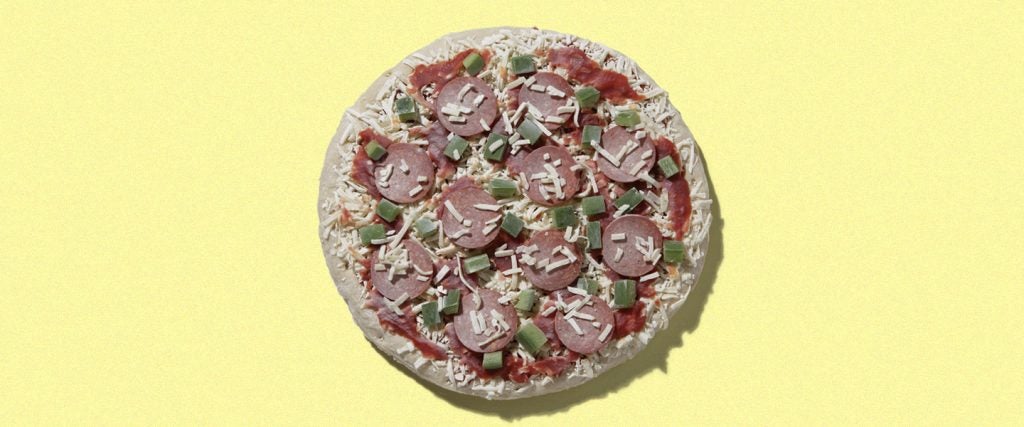Because my wife tends to leave the frozen pizza on the counter as the oven preheats, I’ve assumed responsibility for cooking frozen pizzas in the household. Not that it’s a huge task by any means, but I’ve long been a devout practitioner of baking frozen pizzas straight from the freezer. I’ve never, however, confronted my wife about her frozen pizza negligence, which may speak to my fear that my strict adherence to baking frozen pizzas could one day be exposed as wrong.
But today, I took a leap of faith and asked a couple former pizza chefs whether or not you should thaw a frozen pizza before cooking it.
According to Stefano Velia, pizza chef and owner of Pala Pizza, the reason manufacturers freeze pizza in the first place — and instruct customers to cook it directly from the freezer — has nothing to do with its preparation. “Typically, they do this because it reduces the chance of food contamination/bacteria growth during the thaw stage,” he explains. “One less thing for the company to worry about: sick customers.”
With that in mind, so long as it’s thawed properly, Veila argues that thawing your frozen pizza before baking it might improve its taste. “Just don’t leave the frozen pizza out for exceedingly long times on the counter, and the chance of contamination or bacteria growth happening is really low,” he tells me. “I don’t cook frozen pizza often these days, but if I were to, I would absolutely thaw it in the refrigerator the night before or that morning because leaving it in the refrigerator basically eliminates any chance of bacteria build up.”
This is where Brian Chau, a food scientist in California, argues the counterpoint. “The user experience of frozen pizzas is about convenience, and thawing isn’t convenient,” he says. From a food safety perspective, Chau agrees that thawing a frozen pizza overnight in the fridge is best. But even if you successfully thaw a frozen pizza free of microbial growth, a thawed pizza drastically changes the frozen pizza calculus.
In other words, trust that the multimillion dollar frozen pizza industry knows what it’s doing. “There has been a significant amount of testing involved in cooking cycles to achieve a cooked pizza, so the instructions on the back of the box are justified,” Chau says. “When ice crystals in the food melt, they break down cells and create a sogginess, so thawing comprises the texture and the overall integrity of the frozen pizza.”
But, he continues, “if texture and time isn’t a big deal, then thawing is a matter of preferences.” And if you prefer, or want to try a thawed frozen pizza, Velia has you covered. “Place it on a piece of parchment paper while thawing overnight in the fridge, so it can be easily slid onto a peel or baked directly on the pan,” he explains. “Then I’d preheat my oven as hot as it goes and launch it onto my pizza stone.” For those who don’t have a pizza stone — or don’t know how to use one — “preheat a pan and carefully put the pizza onto it and bake until the cheese is bubbling and beginning to brown,” usually 12 to 15 minutes, depending on the thickness of your pizza dough.
Setting aside the fact that you technically started prepping 24 hours ago, cooking a thawed frozen pizza actually shaves a few minutes off your total cooking time. But by that point, you’ve flagrantly disregarded the instructions on the back of the box, and that’s just something I can’t get behind.
So if you’ll excuse me, I’ve got a soggy, lukewarm pizza to put back in the freezer.

